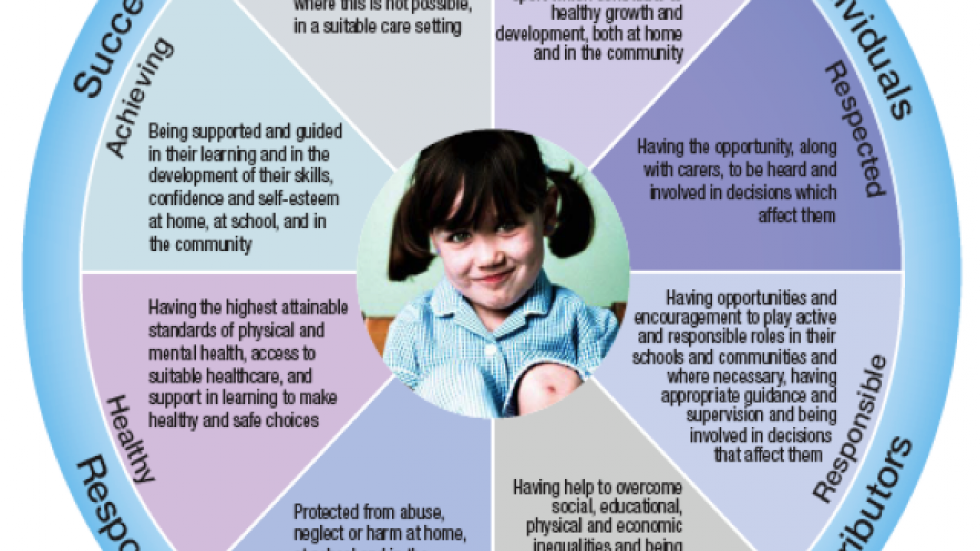In Scotland, a national programme called Getting it right for every child (GIRFEC) aims to improve outcomes for all children and young people, including educational outcomes.
The GIRFEC method encourages professionals to make judgments based on the best relevant information, and supports appropriate early intervention. This approach ensures that anyone providing support to children puts the child or young person and, importantly, their family at the centre.
The GIRFEC Practice Model contains the wellbeing wheel shown in the image above. This illustrates the main ways in which children can be best supported to ensure their overall wellbeing.
A child’s wellbeing and other outcomes can be assessed against the eight indicators in this wheel: safe, healthy, achieving, nurtured, active, respected, responsible and included. For all children and young people to achieve their potential and become successful learners, confident individuals, effective contributors and responsible citizens – the aim of Curriculum for Excellence in Scotland – they must each be helped to achieve the best they can according to these eight indicators.
From 2006, some areas of Scotland have been implementing the GIRFEC programme in all children’s services. In the Highland area, the local authority become what was known as a ’Pathfinder’ area and formally implemented and evaluated the use of the GIRFEC approach. The evaluation was positive and influenced the inclusion of certain aspects of the programme in new legislation – the Children and Young People Scotland) Act 2014.
The purpose of this Act is to take steps required to achieve the Scottish Government’s stated intention to ‘make Scotland the best place to grow up’. A key part of the Act, which relates to children with additional support needs, are is the provision of a Named Person for every child and the creation of single child's plan for children with a wellbeing need. A Named Person will means that the child and their family have a single point of contact who can work with them to sort out any further help, advice or support if they need it.
It is expected that the Named Person will be a health visitor for pre-school children and headteacher for school-age children. The single child's plan aims to make sure that all relevant agencies that might be involved in supporting a child share information and plan around the child.
For more information see www.scotland.gov.uk/gettingitright
